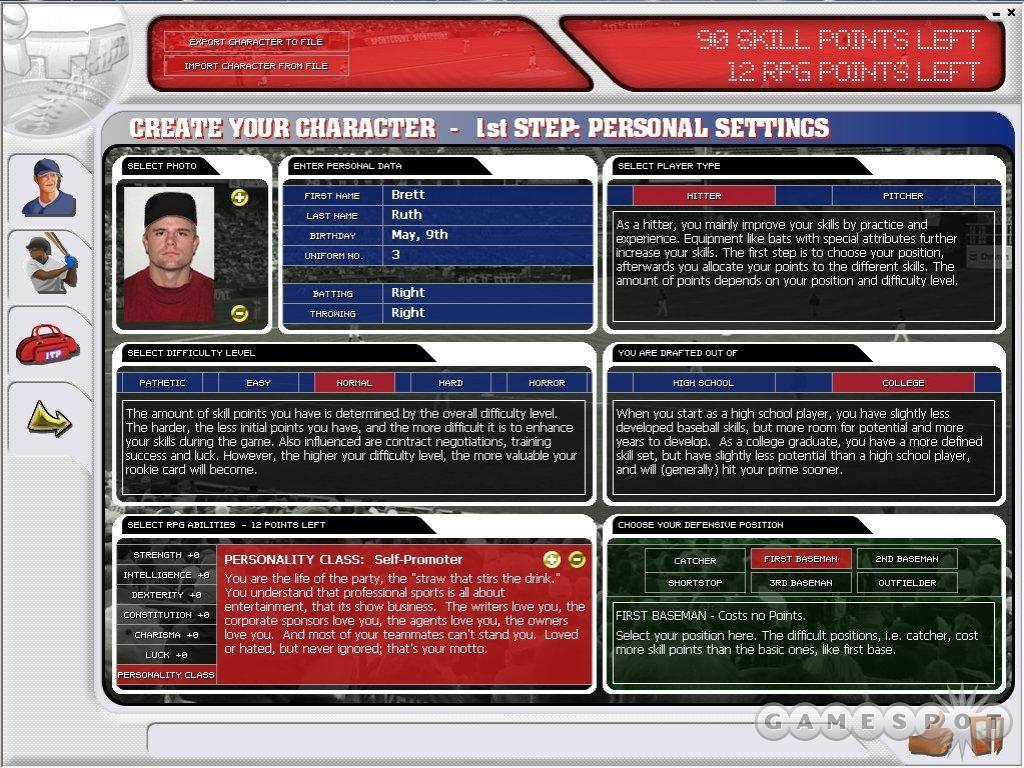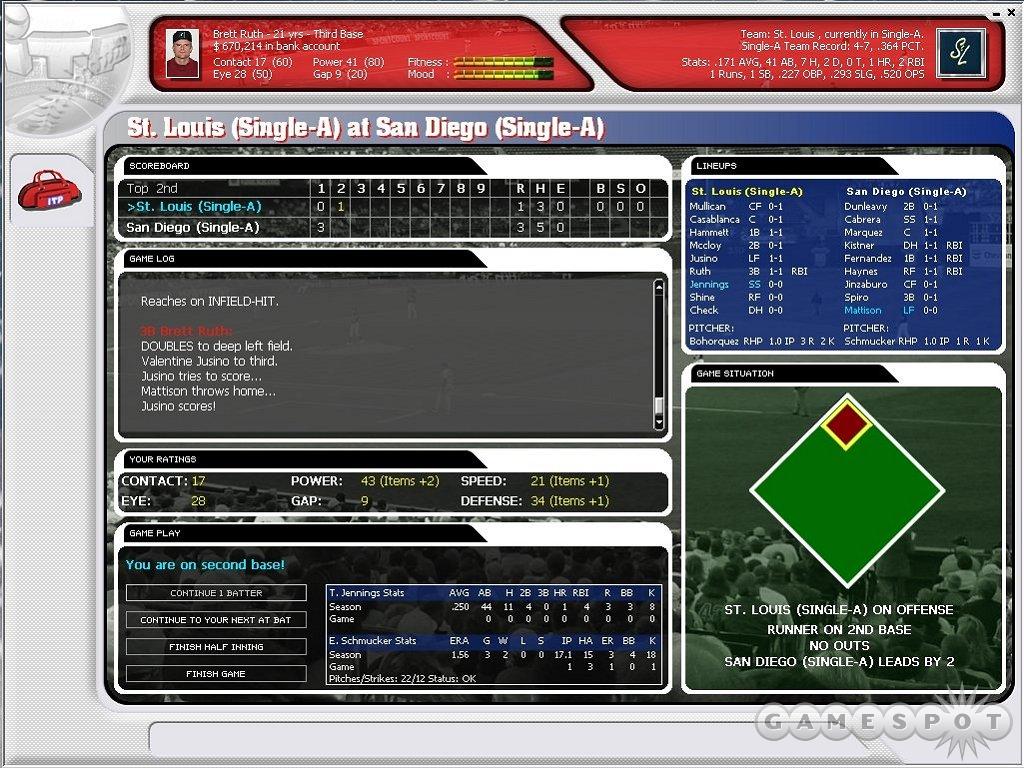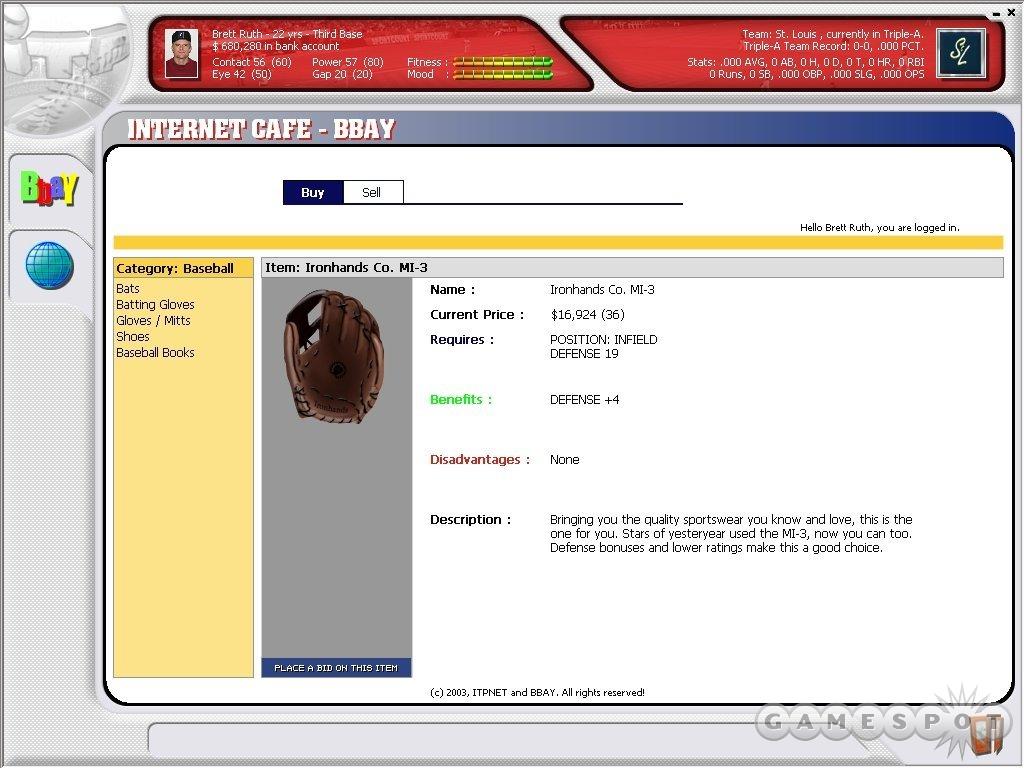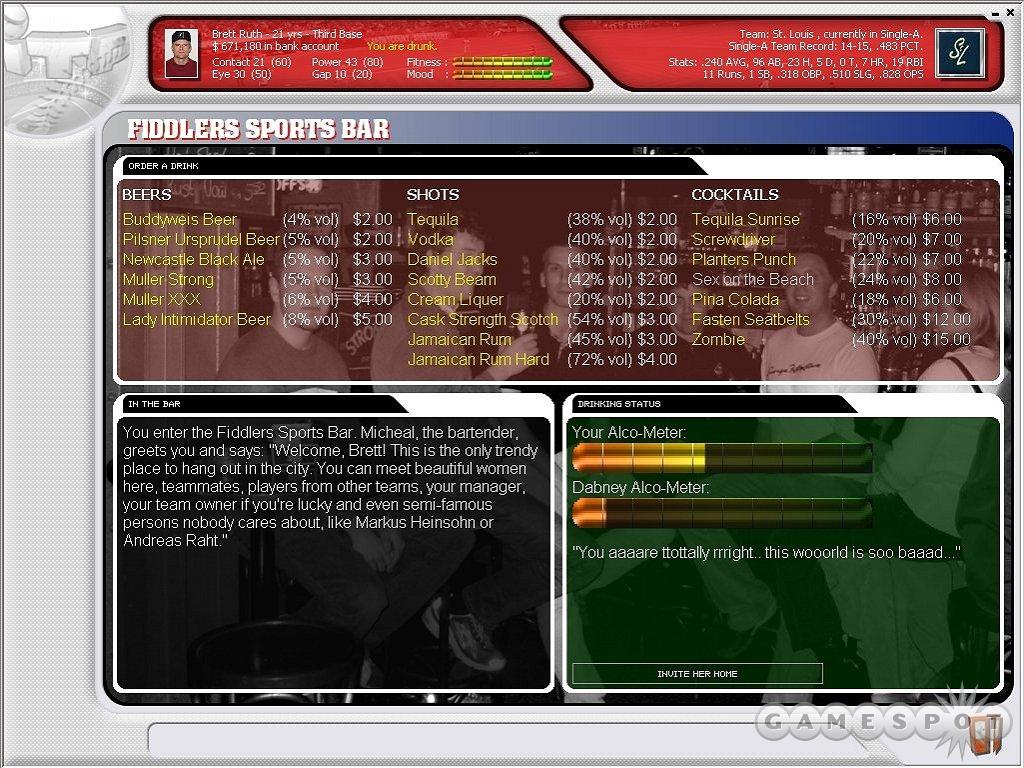The first thing you need to know about Inside the Park Baseball is that it is unlike every other text-based sports sim on the market. Markus Heinsohn, designer of the award-winning Out of the Park Baseball (OOTP) series, has turned the genre on its head. Instead of managing a team, you control the career of a single player who's aiming to become a big-league phenom. Stats and role-playing go hand in hand here. As with most new ideas in gaming, this one isn't fully realized. But the appeal of portraying a rookie with big-league dreams and the solid stat-generation of the OOTP engine make the experience captivating for a few virtual seasons.

Most of the game is based on role-playing. While Inside the Park looks and sounds like a typical sports management sim, with elementary graphics bearing more numbers than pictures and almost no sound, it feels like a fantasy role-player. You choose a name, allocate points to stats that have been ripped right out of Dungeons & Dragons (strength, constitution, and so on), pick a position, and even select a personality type that subs for class. Here, though, you select from options like the Gary Sheffield-like self promoter and the Nomar Garciaparra-styled team captain rather than the fighter and the cleric. Finally, you divvy up skill points among abilities, like contact hitting, home run power, gap power, and fielding, and await a phone call on draft day.
Most will find the character creation pretty simplistic. This especially holds true for experienced role-playing gamers, since there are no skills to select. All you do is move numbers around in preselected categories. Want to be the next Babe Ruth? Allocate points to the power skill. Want to be the next Rickey Henderson? Move points to contact hitting and running speed. This results in cookie-cutter big leaguers, not individuals. Having the freedom to customize ballplayers by picking abilities--for instance, perhaps a pitcher could select from a number of skills, like move to first and clutch performance, or a contact hitter could select his "hot" hitting zones--would have added a lot to replayability. As it is, you're stuck with just three or four types of players, and this can get boring after a few games.

Gameplay after the draft is also straightforward, thanks in part to a menu screen that puts all options on a screen that shows a ballpark and the surrounding neighborhood. Just click on a building--home, the local bar, a fitness center, the stadium, and so on--to access the tools needed to build your career. Contrary to the name of the game, most of the game actually takes place outside of the ballpark. Your career hinges on developing a good training regimen and buying the bats, batting gloves, gloves, shoes, and instruction manuals needed to perform well on the field. The former makes sense, as any prospect has to spend a lot of time performing bench presses and participating in batting practice, but the latter clearly has more to do with D&D than dugouts.
Equipment is handled in the same manner that weapons and magic items are handled in a fantasy RPG. The only difference is that you have to purchase everything with contract money, since there are no orc lairs piled up with cool shoes, nor are there arcane tomes on the art of the screwball. For instance, bats come in plain-Jane $10,000 varieties and $6.2 million models, like the +10 power hitting/+14 gap hitting Magic Sticks XP II, which is essentially a wooden vorpal sword.
This kills any pretensions Inside the Park has toward being true to baseball. The "magic" equipment isn't even particularly well implemented, due to limited selection and a huge gap that divides common equipment from the killer stuff. There are just 12 bats in the store, for example, and only three are affordable when you're in the minors. Once you get beyond the trio of basic models, which retail for no more than $13,000 each, the sticker price rockets to more than a million. So forget about choosing lumber until you reach the majors. All equipment types aren't quite so unbalanced, although this problem is still an issue with the rest of your gear.

Other options are gimmicky yet entertaining. Setting up the training regimen noted above is a simple matter of filling a schedule with exercises that build strength and flexibility. Targets are provided so you can maximize workouts without damaging your fitness level and getting into trouble on the field. In about five minutes, you can set up a program that serves your player well for most of his career.
Adjacent buildings offer more goodies. The local sports bar provides you with the opportunities to get into a fight or to pick up a babe who might "boost your mood" for the next day's game. Over at the Internet café, you can browse equipment listings on the Bbay auction Web site. You might find a bargain or something rare that isn't sold at the sports store, like the amazing Teddy Ballgame bat (+13 contact, +14 power, +12 gap), which is an instrument that might get you into the Hall of Fame alongside Ted Williams. You can visit the front office to negotiate a contract extension after making it to the majors, or you can go home to muse over your statistics. Just don't get too upset with these numbers or your position in the batting order, because there aren't any options to place demands on a team or to simply walk out.
And that's about it. Oh, yeah, the baseball. As with the sister OOTP series, the schedule can be simmed by the day, week, month, or season, or you can follow every at bat in every game. The presentation is very similar to that of OOTP 5. Overall team stat-generation seems right on the money, which isn't surprising, since the game uses the same engine as the impressively accurate OOTP 5. The big difference is that you can directly control just a single player. However, this might not be a good idea. Even though you can direct each at bat with instructions like "swing for the fences," "pull the ball," and "just put it in play," manual control seems to murder your performance. Numbers drastically improve when you let the game go on autopilot. In fact, you can go from struggling at the Mendoza Line (batting around .200) in May to hitting .330 with power, which can launch you to AAA, by the end of August.

Or not. While at times it's easy to take a player from A-ball to the Major Leagues within a season--and from there to a legendary career--other times your fortune seems to be completely random. You can have a fantastic rookie year and be swapped for an also-ran the day the season ends. Similarly, you can be sent to the minors in the middle of a hitting streak. Slumps and streaks seem emphasized to the point of numerical manic-depression. Overall rating is determined by the value of your rookie card, and it bounces around too. Some games, it isn't a challenge to boost your card into the $1,000 stratosphere, which is occupied by the likes of Mickey Mantle. On other occasions, however, it stays below $100 even if you've compiled an impressive career. All of which would be fine if you could put your finger on the reasons for success and failure, but usually you can't.
Needless to say, Inside the Park Baseball isn't geared for hardcore stat-heads. The game also bears all the hallmarks of being the first release in a series (and even the first release in a new genre), since sim times are fairly slow and so much of the sports role-playing concept remains a work in progress. Still, looking at the framework and taking into account the way that designer Heinsohn turned the mundane, original OOTP into the Cadillac of baseball management sims, it's clear that the game has a lot of promise. And at just $19.99 on the Inside the Park Web site, it's a good value. It just isn't quite ready for the big leagues yet.